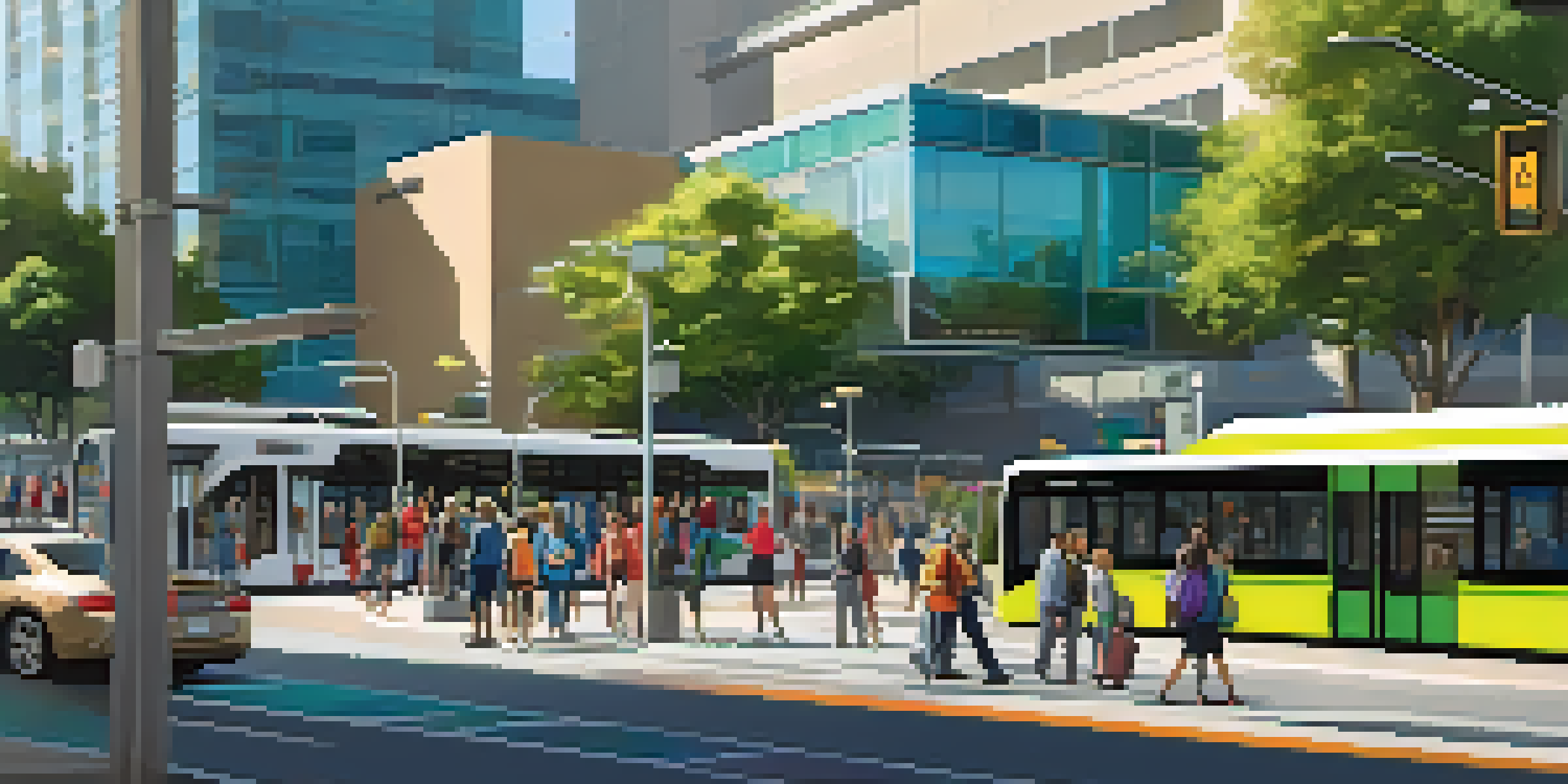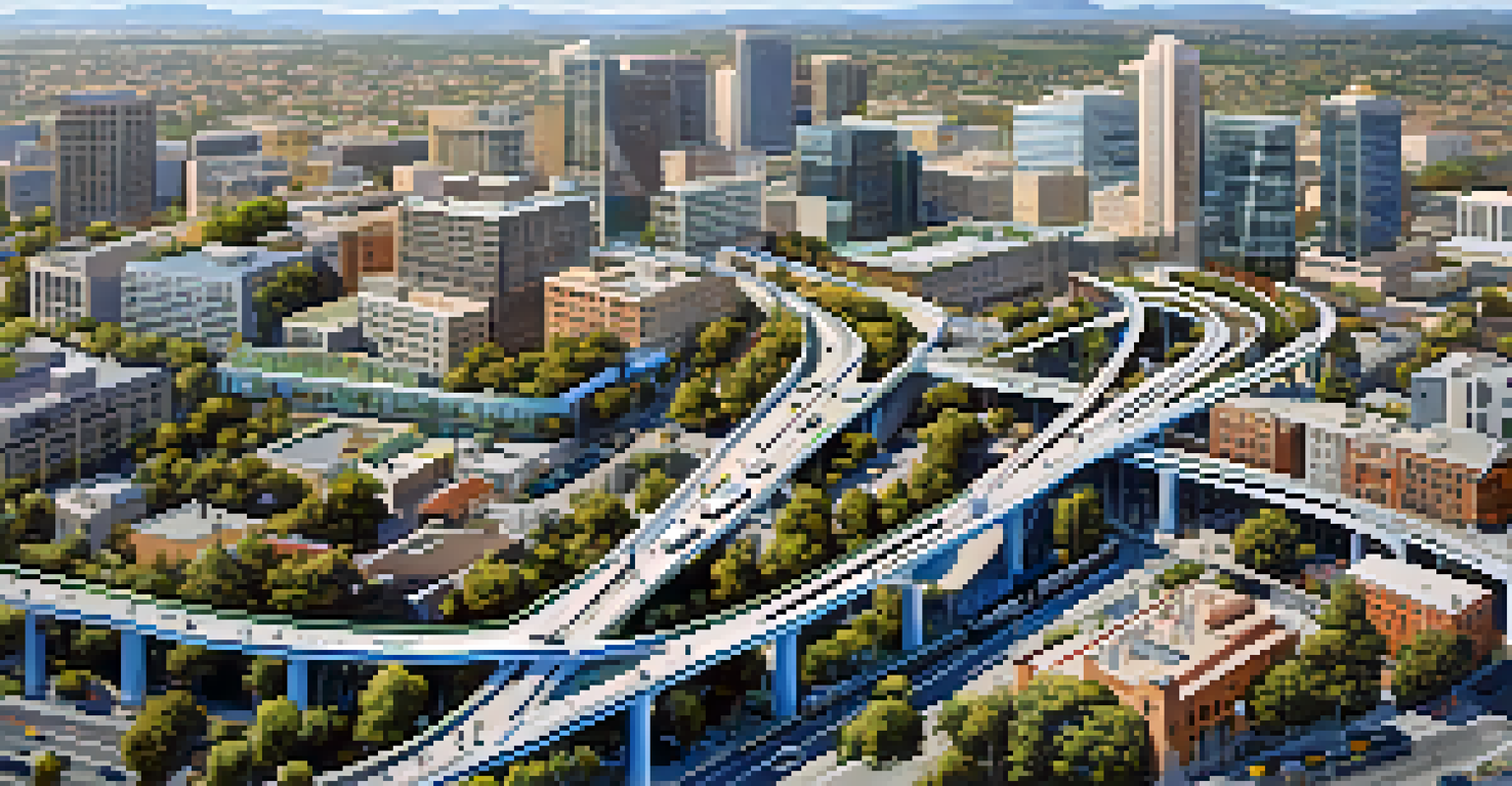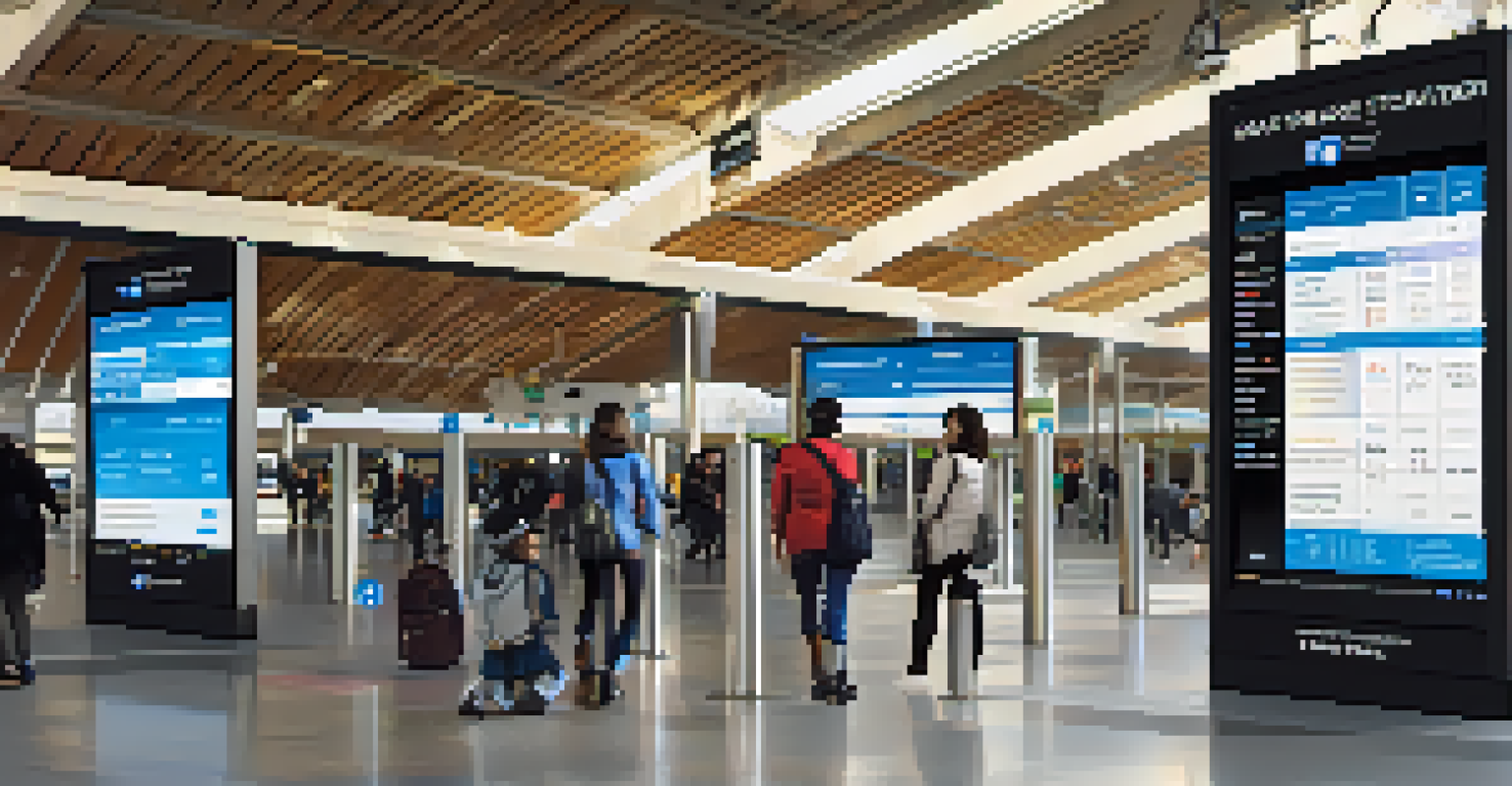Enhancing San Jose's Public Transit: A Vision for the Future

Understanding San Jose's Current Transit Landscape
San Jose's public transit system is a vital part of the city's infrastructure, serving thousands of residents daily. However, many people still rely on cars for their commutes, leading to traffic congestion and environmental concerns. Understanding the current landscape allows us to identify key areas for improvement and innovation in transit options.
Public transportation is the backbone of any city. It connects people to their jobs, schools, and communities, making it essential for a thriving urban environment.
The existing network comprises buses, light rail, and shuttle services, but gaps in coverage and frequency often hinder its effectiveness. For instance, while certain areas are well-serviced, others can feel neglected, making public transport less appealing. This inconsistency creates a dependency on personal vehicles, which is not ideal for a sustainable future.
To transform this landscape, it's essential to embrace a vision that prioritizes accessibility, reliability, and user-friendliness. By analyzing current ridership patterns and gathering community feedback, we can begin to formulate strategies that enhance the overall transit experience.
The Role of Technology in Modernizing Transit
In today's fast-paced world, technology plays a crucial role in modernizing public transit systems. From mobile apps that provide real-time updates to contactless payment options, tech innovations can streamline the commuting experience. For instance, implementing GPS tracking on buses can help riders plan their journeys more efficiently.

Moreover, integrating data analytics can help transit authorities identify peak travel times and adjust schedules accordingly. This kind of responsiveness ensures that services meet the needs of commuters, ultimately leading to higher satisfaction and increased ridership. Imagine a scenario where commuters receive alerts about delays or changes directly on their smartphones.
Enhancing Transit Accessibility for All
Improving accessibility through infrastructure upgrades and community engagement ensures that all residents, including those with disabilities, can utilize public transit effectively.
Additionally, smart infrastructure, such as automated traffic signals that prioritize buses, can significantly reduce travel times. By leveraging technology, San Jose can create a more efficient and user-friendly transit system that encourages more residents to leave their cars at home.
Promoting Sustainable Transit Options
Sustainability should be at the forefront of any vision for the future of San Jose's public transit. This involves not just reducing emissions but also enhancing the overall environmental impact of the system. For instance, introducing electric buses can significantly lower carbon footprints while providing a cleaner alternative for commuters.
Sustainability is no longer about doing less harm. It's about doing more good.
In addition to electrification, integrating bike-sharing programs and pedestrian-friendly routes can encourage a more holistic approach to transit. By making it easier for people to combine biking or walking with public transport, we can foster a culture that values eco-friendly travel options. Picture a city where bike lanes connect seamlessly to transit hubs, making first and last-mile journeys a breeze.
Furthermore, promoting transit-oriented development can help create communities that prioritize public transport access. This means more people living close to transit stations, reducing reliance on cars and improving overall air quality. Sustainable transit isn’t just an option; it's essential for the health of San Jose's environment and its residents.
Enhancing Accessibility for All Residents
Accessibility is a critical component of an effective public transit system. Ensuring that all residents, including those with disabilities, have equal access to transit options is not just a legal requirement but a moral obligation. This can involve measures such as installing ramps, elevators, and clear signage at transit stations.
Moreover, providing training for transit staff to assist individuals with diverse needs can foster a more inclusive environment. For example, staff who are trained in sensitivity and practical assistance can make a significant difference in the daily commute for individuals with disabilities. Imagine a transit system where every rider feels valued and supported.
Leveraging Technology for Transit
Integrating technology, such as real-time updates and smart infrastructure, modernizes public transit and enhances the commuting experience for residents.
Additionally, community outreach programs can help gather feedback from underrepresented groups, ensuring their voices are heard in transit planning. By actively engaging with the community, we can build a transit system that truly meets the needs of all San Jose residents, making public transport a viable option for everyone.
Investing in Infrastructure Upgrades
To enhance public transit, significant investment in infrastructure upgrades is essential. This includes not only maintaining existing transit facilities but also expanding them to accommodate growing populations. For instance, building additional light rail lines can connect underserved neighborhoods to job centers and educational institutions.
Moreover, improving bus stops with shelters, seating, and real-time information displays can greatly enhance the commuter experience. Imagine waiting for a bus in a comfortable, well-lit area with access to information about upcoming arrivals. These small changes can make a big difference in attracting more riders.
It's also vital to consider the integration of multi-modal transport options, such as shuttle services that connect to major transit hubs. By creating a cohesive network that allows easy transfers between different modes of transport, we can improve overall accessibility and convenience for all commuters.
Community Engagement in Transit Planning
Community engagement should be a cornerstone of any successful public transit initiative. Actively involving residents in the planning process ensures that their needs and preferences are considered. Hosting town hall meetings, surveys, and workshops can provide valuable insights into how to improve the transit experience.
Additionally, engaging with local businesses can foster partnerships that further enhance public transport. For example, businesses can offer discounts to commuters who use public transit, creating a win-win situation for both parties. Picture local cafes offering a discount for customers who arrive via bus or light rail.
Sustainable Transit Solutions Ahead
Promoting sustainable transit options, like electric buses and bike-sharing programs, is essential for reducing environmental impact and fostering eco-friendly travel in San Jose.
Furthermore, promoting awareness campaigns about the benefits of public transit can help shift perceptions and increase ridership. By showcasing stories from satisfied commuters, we can illustrate the positive impact of a well-functioning transit system on the community's quality of life.
Funding Opportunities for Transit Enhancements
Securing funding for public transit enhancements is crucial to turning visions into reality. This can involve exploring various funding sources such as federal grants, state allocations, and public-private partnerships. For instance, leveraging federal infrastructure funds can provide a significant boost to transit projects.
Moreover, local initiatives, such as voter-supported transit taxes, can generate revenue dedicated to improving public transport. Engaging the community in discussions about funding options can help build support for necessary investments. Imagine a scenario where residents rally behind a proposal to fund expanded bus services through a small local tax.

Additionally, innovative funding models, such as congestion pricing or partnerships with tech companies, can provide alternative revenue streams. By thinking creatively about funding, San Jose can ensure that its public transit system continues to evolve and meet the needs of its residents.
A Vision for a Connected and Efficient Future
The vision for San Jose's public transit is one of connectivity, efficiency, and sustainability. By prioritizing enhancements across various aspects of the transit system, we can create an environment where public transport is not just an option but the preferred choice for many residents. This vision includes a well-integrated network of buses, light rail, and other transit modalities that work seamlessly together.
Furthermore, the emphasis on technology, accessibility, and community engagement ensures that the system is responsive to the needs of its users. Picture a future where commuters can easily navigate the city using a single app that provides real-time updates on multiple transit options, making every journey more convenient.
Ultimately, by embracing this vision and working collaboratively with stakeholders, San Jose can lead the way in creating a public transit system that sets the standard for others to follow. A connected and efficient future is not just a dream; it's an achievable reality with the right commitment and action.